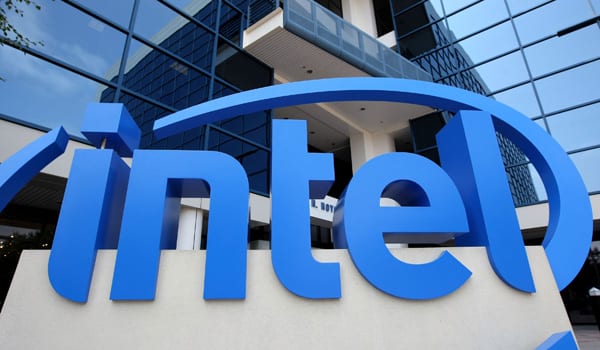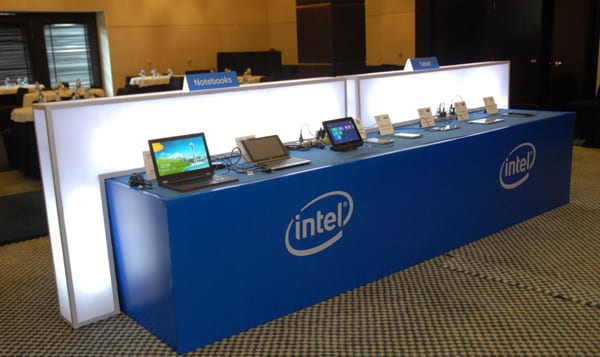As Intel Corporation celebrates 30 years of local and global technology innovation this year with China, Intel CEO Brian Krzanich today announced additional investments and collaborations that promise to deliver value across a range of industries for the smart, connected world for years to come.
Krzanich, along with additional keynote speakers Ian Yang, president of Intel China, and Doug Fisher, senior vice president and general manager of Intel’s Software and Services Group, opened the company’s annual developer conference for Chinese developers today. Kirk Skaugen, senior vice president and general manager of Intel’s Client Computing Group; Diane Bryant, senior vice president and general manager of Intel’s Data Center Group; and Doug Davis, senior vice president and general manager of Intel’s Internet of Things Group will speak on April 9.
Krzanich stressed the need for Intel and the developer community to provide leading- edge technologies to China that drive differentiation across a range of products and industries – from the data center to PC and mobile devices to wearables, as well as the Internet of Things (IoT). He also emphasized the importance of the maker community to develop new generations of computing and connected solutions.
“The local and global impact of our 50 years of Moore’s Law innovation and 30 years of strong collaboration and winning together in China is unmatched,” said Krzanich. “Intel remains focused on delivering leadership products and technologies in traditional areas of computing, while also investing in new areas and entrepreneurs – students, makers and developers – to find and fuel future generations of innovation with China.”
New Products, Collaborations and Investments in China Drive Future Innovation
- Rockchip CEO Min Li joined Krzanich on stage to discuss progress made since the companies formed a strategic collaboration last year to expand the offerings of the Intel® Atom™ x3 processor family (code-named “SoFIA”) for entry and value tablets, phablets and smartphones. Multiple original design manufacturers (ODMs) are designing products based on the Intel® Atom™ x3-C3230RK quad-core processor reference design from Rockchip, with devices expected to be in market later this quarter. In addition, Intel previously announcedecosystem support from 20 companies, with more than 45 tablet, phablet and smartphone designs currently in development based on the Intel Atom x3 processor reference designs.
- Intel showcased the first live demonstration of the Intel Atom x3 processor in a smartphone, supporting LTE-TDD connectivity over China Mobile’s* network. The part is expected to ship in the second half of this year.
- Intel announced the expansion of the Intel Atom x3 processor roadmap with the addition of 3G and LTE processors for the Internet of Things. The new purpose-built processors will be offered with an extended temperature range for extreme weather conditions, support for Linux* and Android*, and seven years of extended product lifecycle support. Developer kits will be available in the second half of this year.
- Krzanich discussed how Intel® RealSense™ cameras can provide intuitive, vision-based capabilities for solving complex problems and delivering exciting new usages and capabilities across a variety of form factors. To that end, he showed for the first time a 6-inch smartphone prototype with a new, longer-range Intel RealSense camera built into the device.
- Intel announced that the Intel® Pentium® and Intel® Celeron® processors (code-named “Braswell”), the next-generation system-on-a-chip (SoC) based on Intel’s 14nm process technology, are now shipping to customers for 2 in 1 devices, laptops, tower and miniature desktops, and all in one PCs. These processors offer the ideal balance of cost, performance and power, and are optimized for the value and entry segments. The new processors are expected to deliver up to two times1 the graphics performance and increased battery life2 compared to the previous generation at a lower thermal design point. More than 40 designs from a variety of OEMs are expected later this year.
- Building on a successful turnkey program for the Intel Atom x3 and Z3700 processors, Intel announced it will expand the program to include the Intel® Atom™ x5 processor to help reduce customers’ cost and time to market for Intel-based tablets. The program offers a customizable reference design with differentiated applications and software, quality and certification support, software tools, and a component catalogue.
- Intel unveiled the Mass Makerspace Accelerator program that aims to find and fund China’s next global entrepreneurs, from makers and students to developers and startups, and includes a RMB 120 million investment.
- Intel shared details of its collaborations with Chinese companies to help address opportunities in energy efficiency, transportation and pollution monitoring.
- Vantron* and BII Group* worked together to incorporate Intel-based IoT gateways into the Beijing Friendship Hotel* to help gather sensor data and create a smart building that consumes less energy.
- Intel is working with TransWiseway*, a Beijing traffic information service provider for vehicle monitoring and management solutions, to create an end-to-end commercial vehicle telematics platform based on Intel® Quark™ technology. The solution has received the Ministry of Transportation certification and approval, and a nationwide deployment of this solution is scheduled for this year.
- Intel Chengdu Fab engineers created an air monitoring system using the Intel® Edison platform that Cylan*, a CTE customer, incorporated into its smart home gateway to create an end-to-end pollution and energy management system.
- Intel, the Strategic Alliance of Smart Energy Industrial Technology Innovation* (SASE) and ecosystem partner BII Group announced their first joint IoT lab in China. Located in Beijing, the lab will demonstrate and promote solutions based on Intel® technology and support product validation and connecting to the energy cloud.
- Intel and the Chinese Academy of Sciences’ Supercomputing Department introduced the first Intel® Parallel Computing Center (Intel® PCC) in China. The Intel PCC will work to modernize software code for molecular dynamics models. The models will interact with billions of particles to provide insight for biology and DNA, potential cures to disease, genetics, and more.












